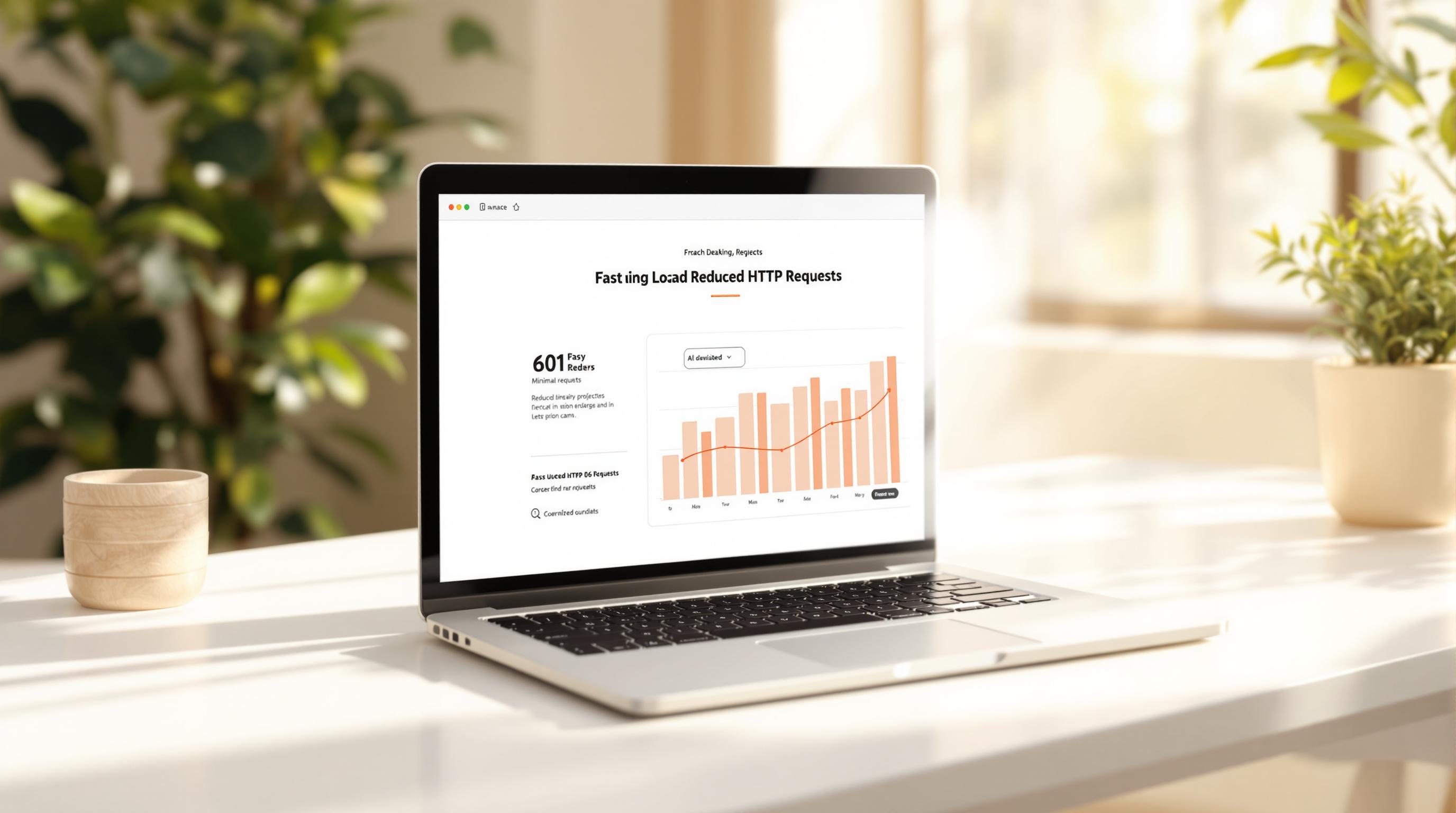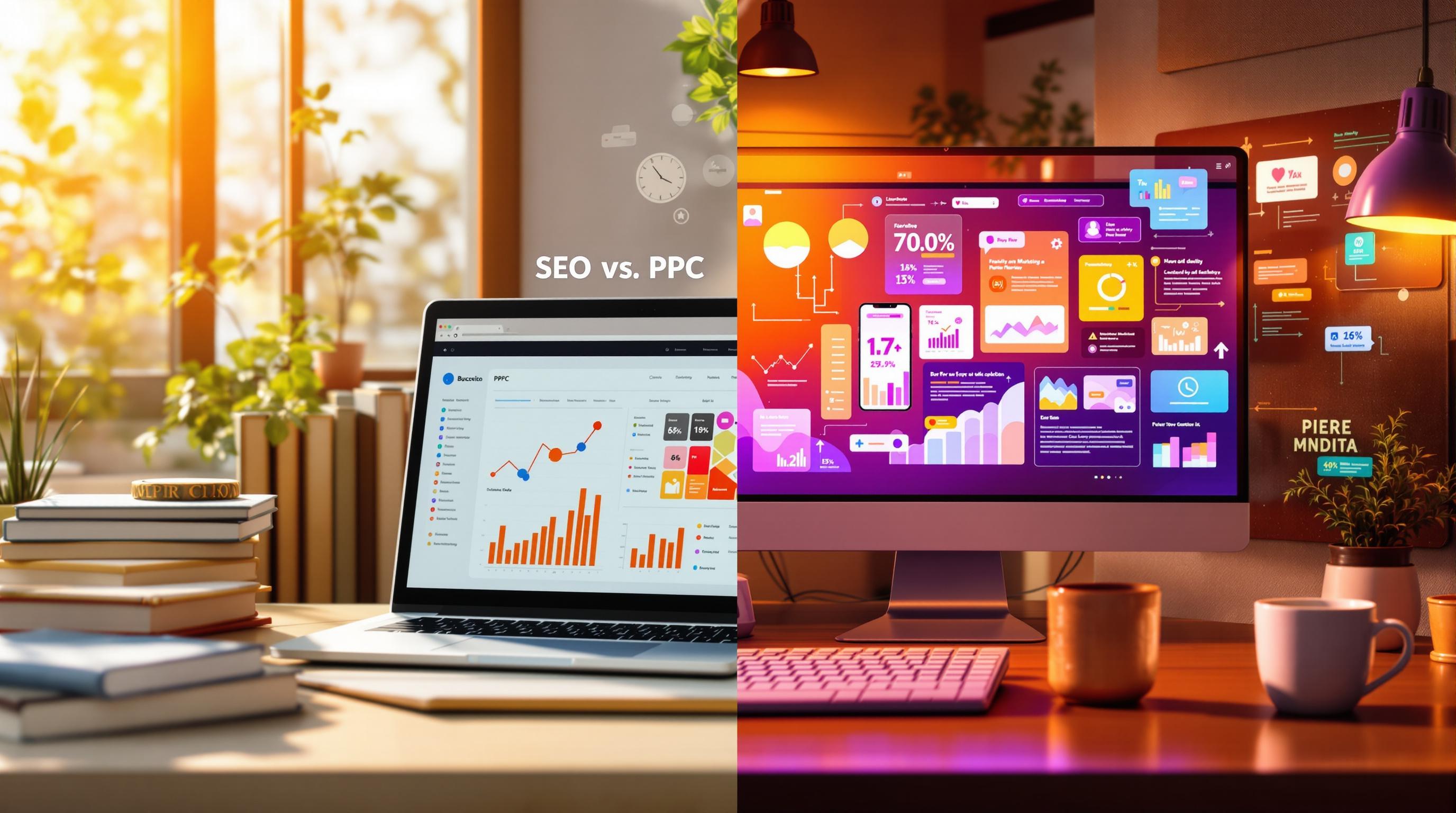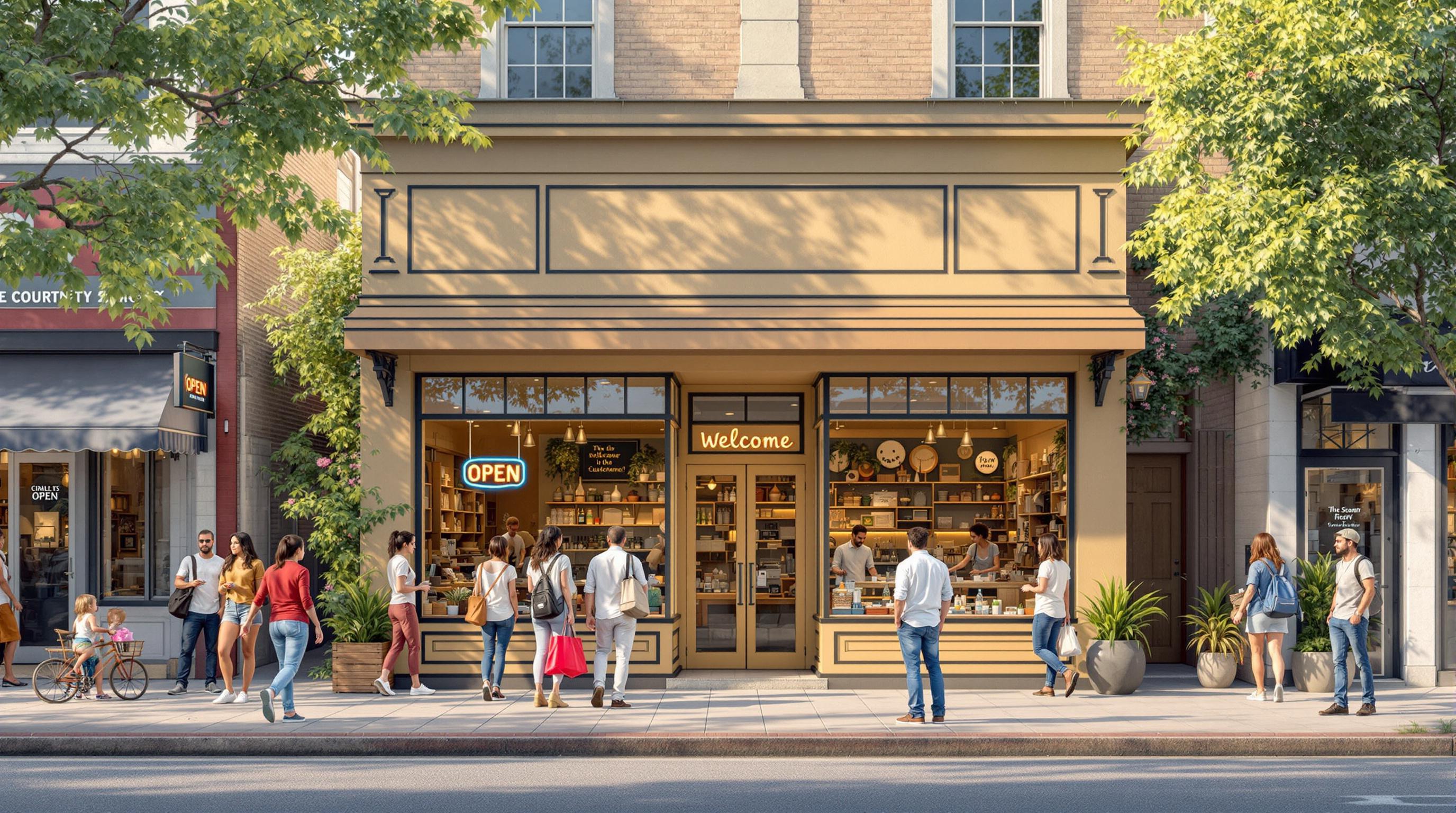Effective CTA placement can significantly increase user engagement and conversions. Here are 9 examples and strategies for placing Call-to-Action (CTA) buttons effectively:
- Top-of-Page CTAs: Placing CTAs in the hero section (e.g., MVMT Watches increased revenue by 25% by moving "Shop Now" to the top).
- Content-Based CTAs: Inline CTAs within blog posts or articles (HubSpot saw a 192% boost in blog-to-lead conversions).
- Mobile-Friendly CTAs: Thumb-friendly zones and fixed-position buttons (Booking.com increased bookings by 28% with thumb-zone optimization).
- Floating CTAs: Always visible on the page (Amazon's sticky "Add to Cart" button).
- Behavior-Based CTAs: Dynamic CTAs triggered by user actions (HubSpot achieved a 42% conversion boost with personalized CTAs).
- SaaS Main Action Buttons: Dual CTAs like "Try for Free" and "Watch Demos" (Salesforce uses this for diverse user needs).
- White Space Usage: Clean, uncluttered designs to highlight CTAs (HubSpot uses padding for better focus).
- Premium Offer CTAs: Bold designs with clear spacing for high-value offers (HelloFresh uses this to boost meal plan sign-ups).
- Machine Learning CTAs: AI-driven placements adjusting in real-time based on user behavior.
Key takeaway: Strategic placement, mobile optimization, and personalization are crucial for effective CTAs. Use A/B testing to refine designs and ensure usability across devices. Below is a quick comparison of CTA placement types:
Quick Comparison
| Placement Type | Best Use Cases | Key Benefits | Potential Drawbacks |
|---|---|---|---|
| Top-of-Page CTAs | E-commerce, SaaS homepages | Highly visible, immediate action | May be skipped during fast scrolling |
| Inline CTAs | Blog posts, long-form content | Contextual, boosts engagement | Can blend into the content |
| Floating CTAs | Product pages, mobile apps | Always accessible | Risk of being intrusive |
| Behavior-Based CTAs | Personalized user journeys | Real-time engagement | Requires advanced tools |
| Fixed-Position Mobile CTAs | Mobile apps, responsive design | Easy access, boosts usability | Can block content if poorly designed |
CTA placement isn’t one-size-fits-all - choose the right method based on user behavior, device type, and content goals.
Call to Action buttons: 6 easy tricks. Website conversion rate optimization examples
Top-of-Page CTA Placement
Placing CTAs (Call-to-Actions) at the top of webpages is a proven way to boost user engagement. In fact, 90% of visitors who read your headline also read your CTA copy [6]. Let's explore two examples that highlight how effective top-of-page CTAs can be in different scenarios.
E-commerce Hero Section CTAs
When it comes to e-commerce, hero sections can make or break conversions. A great example is MVMT Watches, which moved their "Shop Now" CTA to the top of their homepage hero section. This simple change increased conversions from 1.8% to 2.7% and drove a 25% revenue increase within just 30 days [4].
What makes hero section CTAs work? It’s all about design and placement. Here's a breakdown:
| Element | Why It Works | Example |
|---|---|---|
| Color Contrast | Boosts visibility by up to 42% | Netflix’s red CTA on a dark background |
| Button Size | Increases conversions by 10-30% | Minimum 48x48px for mobile devices |
| White Space | Directs attention to the CTA | Amazon’s isolated "Shop Now" button |
| Visual Hierarchy | Keeps focus on the CTA | Clear separation from other elements |
SaaS Platform Main Action Buttons
SaaS companies have also refined their top-of-page CTA strategies. Salesforce, for example, uses a dual CTA approach with a "Try for Free" button alongside a "Watch Demos" option in their hero section [3]. This setup works well because it addresses different user needs while maintaining a clean visual hierarchy.
"A study by Google found that buttons with a minimum size of 48x48 pixels on mobile devices had higher click-through rates" [2].
Dropbox takes it a step further with its 'Sign up for free' button. They use subtle micro-interactions, like color shifts and shadows on hover, to make the button more engaging [3].
Here are some tips for crafting effective SaaS CTAs:
- Stand-Out Design: Use contrasting colors to make the main button pop.
- Mobile-Friendly: Ensure buttons are easy to tap on any device.
- Clear Prioritization: Highlight the primary action while offering secondary options.
- Responsive Layouts: Adjust button placement for different screen sizes.
Top-of-page CTAs are especially powerful on mobile. By using sticky headers with persistent CTAs, companies have seen noticeable improvements in mobile conversions. Positioning buttons where they’re easy to reach with a thumb further enhances usability and engagement [7].
Content-Based CTA Placement
Placing CTAs directly within content can make a huge difference. In fact, in-line CTAs have been shown to increase conversions by up to 121% when placed thoughtfully within the text [3].
In-Article CTAs
HubSpot found success in 2022 by placing CTAs at natural pauses within their blog content. This approach led to a 192% increase in blog-to-lead conversions. They paired these CTAs with relevant downloadable resources, ensuring they matched the reader's interests. A/B testing revealed that personalized CTAs outperformed generic ones by a massive 202% [4].
This tactic isn't limited to blogs. Learning platforms are also using in-content CTAs to encourage user actions.
Learning Platform CTAs
Coursera saw a 35% increase in enrollments during Q3 2023 by adding "Next Step" CTAs after free course previews [2]. Their strategy included progress-based triggers, social proof, and messaging that resonated with users' learning goals. Plus, their mobile-optimized design ensured these CTAs worked seamlessly across devices [3].
Mobile CTA Design
Creating effective CTAs for mobile devices demands careful consideration of how users interact with their phones and the constraints of smaller screens. Research shows that 94% of users browse with their phones held vertically [1], making thumb-friendly design a crucial factor in driving conversions.
Easy-Reach Button Zones
A great example of thumb-zone optimization is Booking.com's 2022 mobile app redesign. By moving their primary button into the natural thumb zone, they saw a 28% increase in booking completions over just three months. This result was based on testing with 500,000 users.
Where you place CTAs on the screen can significantly impact click-through rates:
| CTA Placement | Average Click-Through Rate |
|---|---|
| Thumb Zone | 4.6% |
| Top of Screen | 2.8% |
| Middle of Screen | 3.2% |
| Fixed-Position | 5.7% |
For better usability, primary CTAs should be at least 44x44 pixels to ensure they’re easy to see and tap [2].
In addition to thumb-friendly placement, some apps enhance usability with fixed-position CTAs that stay accessible as users scroll.
Fixed-Position Mobile Buttons
Fixed-position buttons are another effective way to improve conversions on mobile. Instagram’s navigation bar is a prime example, with essential actions like home, search, and profile buttons placed at the bottom of the screen for constant accessibility [3]. According to a 2023 UX study, fixed-position CTAs can boost mobile conversion rates by up to 44% [5].
To make fixed-position CTAs work well, designers should:
- Use transparent or semi-transparent backgrounds to avoid blocking content.
- Focus on critical actions only to keep the interface clean.
- Adjust button sizes to fit different screen dimensions.
- Ensure high contrast for better visibility.
Uber’s app nails this with its “Request Ride” button, which stays visible as users explore pickup options. Similarly, Amazon’s mobile app combines fixed “Add to Cart” and “Buy Now” buttons at the bottom of product pages, offering easy access without cluttering the screen [3].
sbb-itb-d7fe25c
Using Space to Highlight CTAs
White space plays a key role in cutting down on clutter and making CTAs stand out more effectively [1]. This is especially important for high-value offers, where even small design choices can influence user actions.
Premium Offer CTAs
Premium offer CTAs take advantage of generous white space to clearly communicate their value. HubSpot, for example, uses large buttons with plenty of spacing, a tactic that consistently boosts conversions [1].
Here are three key spatial elements that impact the success of premium CTAs:
| Spatial Element | Purpose | Impact on Conversion |
|---|---|---|
| Padding | Separates elements visually | Improves focus and readability |
| Content Spacing | Eases cognitive load | Helps users make decisions faster |
| Button Sizing | Ensures usability | Drives higher click-through rates |
HelloFresh uses high-contrast buttons with ample padding to make their CTAs pop [2]. Their design also maintains consistent spacing across screens, making it easier for users to interact on any device.
To design effective premium CTAs, focus on:
- Consistent Spacing: Add enough padding around CTAs to ensure they stand out.
- Visual Hierarchy: Adjust size and placement to emphasize importance.
- Responsive Margins: Adapt spacing for mobile and desktop while keeping a balanced look.
Contently’s landing page is a great example of this approach. Their demo request CTA is surrounded by white space and uses bold colors to grab attention [2].
Mobile optimization is another must. Everlast’s mobile design shows how proper spacing can make CTAs both urgent and easy to tap [2].
"The strategic use of empty space, also known as white space, around CTAs helps to reduce clutter and improve readability, making the CTA more noticeable and engaging." [1]
To get the most out of CTA spacing, companies should run A/B tests to try different layouts and placements. This ongoing testing process helps fine-tune designs for better results while keeping interfaces clean and user-friendly [1]. Smart spacing not only improves the look but also strengthens the overall user experience, leading to higher conversions.
CTA Placement Methods Compared
Different CTA placements serve different purposes and produce varying results depending on the context and where the user is in their journey. The table below highlights key CTA placements and their best applications.
CTA Placement Comparison Table
| Placement Type | Best Use Cases | Key Benefits | Potential Drawbacks |
|---|---|---|---|
| Hero Section CTAs | E-commerce landing pages, SaaS homepages | Highly visible; encourages immediate action | May be ignored during quick scrolling |
| Inline CTAs | Blog posts, long-form content | Relevant to the context; boosts engagement | Can blend into the content if not distinct |
| Floating CTAs | Complex product pages, conversion-focused sites | Always accessible; stays in view | Can irritate users if overused or intrusive |
Design tweaks can also significantly impact CTA performance. For example, HubSpot effectively places inline CTAs between content sections and at logical endpoints. This keeps users engaged while offering action points that align with their reading flow [1].
Device type plays a big role in CTA success. HelloFresh showcases a mobile-first strategy by using bold, high-contrast buttons with offers like "Get 10 free meals and desserts." This ensures CTAs remain prominent and effective across screen sizes [2].
Key elements that influence CTA success include:
- Visual Hierarchy: Use contrasting colors and clear fonts to make CTAs stand out.
- Contextual Placement: Position CTAs where they naturally align with user intent and content flow.
- Device Optimization: Ensure CTAs are user-friendly on all devices, from desktops to smartphones.
- Brand Consistency: Keep the design cohesive while adapting to different placements.
WordStream provides a great example by pairing strong content with contrasting CTA colors in their assessment offers. This creates a clear guide for users to follow and increases conversions [2].
Finally, regular A/B testing is essential to fine-tune CTA strategies and ensure the interface remains user-focused.
New CTA Placement Techniques
CTA placement strategies are evolving, driven by new technologies and insights into user behavior. Today’s techniques aim to deliver more personalized, dynamic experiences tailored to individual user interactions.
Behavior-Based CTAs
Behavior-based CTAs adjust in real-time based on how users interact with a website. These CTAs change their timing, position, and content to align with user actions, creating a more engaging experience.
For example, HubSpot implemented a personalized CTA system that led to a 42% boost in conversion rates [1].
Here are some key tactics used in behavior-based CTAs:
- Scroll triggers: CTAs appear when users reach specific sections of the page.
- Time-based activation: Prompts show up after a set amount of time.
- Interaction history: Content adapts based on what users have done during past visits.
- Device-specific positioning: Placement is optimized for the user’s device, whether it’s a phone, tablet, or desktop.
These strategies, when combined with machine learning, take personalization to the next level.
Machine Learning CTA Tools
AI-powered tools are reshaping how CTAs are placed. By analyzing user behavior in real time, these systems adjust CTA positions automatically to maximize engagement.
Here’s how it works:
- They gather interaction data.
- They analyze patterns in user behavior.
- They make real-time adjustments to CTA placement.
A great example is HelloFresh, which uses timed discounts for meal plans to drive conversions. This approach has delivered measurable results [2][3].
For mobile users, research shows that placing CTAs above the fold can increase conversion rates by up to 17% compared to those below the fold [2][3]. This insight has led to more experiments with placement variations based on scrolling and engagement data.
Key Insights on CTA Placement
CTA placement has evolved with new insights and tools, emphasizing user behavior and design principles. Effective CTAs share a few important traits: they are positioned at logical decision points, use contrasting colors for visibility, and maintain consistent design across platforms. For instance, HubSpot places CTAs between content sections and at key moments to guide users through their journey [1].
Mobile optimization plays a major role, with studies showing the success of easy-to-reach zones and fixed-position buttons [2][3]. HelloFresh, for example, uses bold colors and strategic placement to grab attention [2].
Looking ahead, personalization and adaptive design are shaping the future of CTAs. Machine learning now allows real-time adjustments based on user behavior, creating dynamic CTAs that outperform static ones. Companies like BrightSide SEO help businesses refine their CTA strategies with data-driven placement and analytics.
Here’s a quick recap of what makes CTAs effective:
- Strategic positioning: Place CTAs at natural decision points in the user journey.
- Strong visual design: Use contrasting colors and white space to make them stand out.
- Mobile-friendly features: Incorporate easy-to-reach zones and fixed-position buttons for mobile users.
- Ongoing testing: Use A/B testing to continually improve placement and design.
FAQs
What is the top right CTA button?
The top-right corner of a webpage is a prime location for secondary calls-to-action (CTAs) that support the main user journey. This spot works well for options like "Learn More" buttons, account access links, or extra resources. It allows users to explore additional features without disrupting their primary experience.
Take HelloFresh as an example. They use bold, contrasting colors and straightforward, descriptive text for their top-right CTAs. This grabs attention while keeping the overall design clean and user-friendly [2].
Here are some tips for placing top-right CTAs effectively:
- Visibility: Use colors that stand out but still match your brand's style.
- Size: Make the button noticeable but not overpowering.
- Text: Write clear, action-focused text that explains the button's purpose.
- Accessibility: Follow WCAG standards for color contrast and clickable areas.
- Mobile-friendly: Adjust the placement for smaller screens.
- Visual hierarchy: Ensure secondary CTAs work harmoniously with primary actions.
The success of a top-right CTA depends on how it fits into the page's layout and user flow. Experiment with button size, color, and wording to find what works best.
For more intricate designs or pages with lots of content, consider adding hover effects or other interactive features. These elements can make buttons more noticeable without cluttering the design [1][2]. This approach balances usability and aesthetics, making it easier for users to spot and interact with secondary navigation options.
These practices tie into the broader discussion about placing CTAs thoughtfully, emphasizing the role of strategic button placement in creating a seamless user experience.


